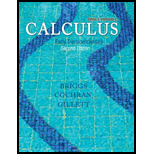
Concept explainers
Miscellaneous limits Evaluate the following limits or state that they do not exist.
71.
Want to see the full answer?
Check out a sample textbook solution
Chapter 2 Solutions
Single Variable Calculus: Early Transcendentals Plus MyLab Math with Pearson eText -- Access Card Package (2nd Edition) (Briggs/Cochran/Gillett Calculus 2e)
Additional Math Textbook Solutions
Elementary Statistics (13th Edition)
Precalculus
Elementary Statistics: Picturing the World (7th Edition)
University Calculus: Early Transcendentals (4th Edition)
Intro Stats, Books a la Carte Edition (5th Edition)
A First Course in Probability (10th Edition)
- 3) If a is a positive number, what is the value of the following double integral? 2a Love Lv 2ay-y² .x2 + y2 dadyarrow_forward16. Solve each of the following equations for x. (a) 42x+1 = 64 (b) 27-3815 (c) 92. 27² = 3-1 (d) log x + log(x - 21) = 2 (e) 3 = 14 (f) 2x+1 = 51-2xarrow_forward11. Find the composition fog and gof for the following functions. 2 (a) f(x) = 2x+5, g(x) = x² 2 (b) f(x) = x²+x, g(x) = √√x 1 (c) f(x) = -1/2) 9 9(x) = х = - Xarrow_forward
- practice problem please help!arrow_forward13. A restaurant will serve a banquet at a cost of $20 per person for the first 50 people and $15 for person for each additional person. (a) Find a function C giving the cost of the banquet depending on the number of people p attending. (b) How many people can attend the banquet for $2000?arrow_forwardAlt Fn Ctrl 12. Find functions f and g such that h(x) = (fog)(x). (a) h(x) = (x² + 2)² x+1 (b) h(x) = 5 3arrow_forward
- Algebra & Trigonometry with Analytic GeometryAlgebraISBN:9781133382119Author:SwokowskiPublisher:Cengage
